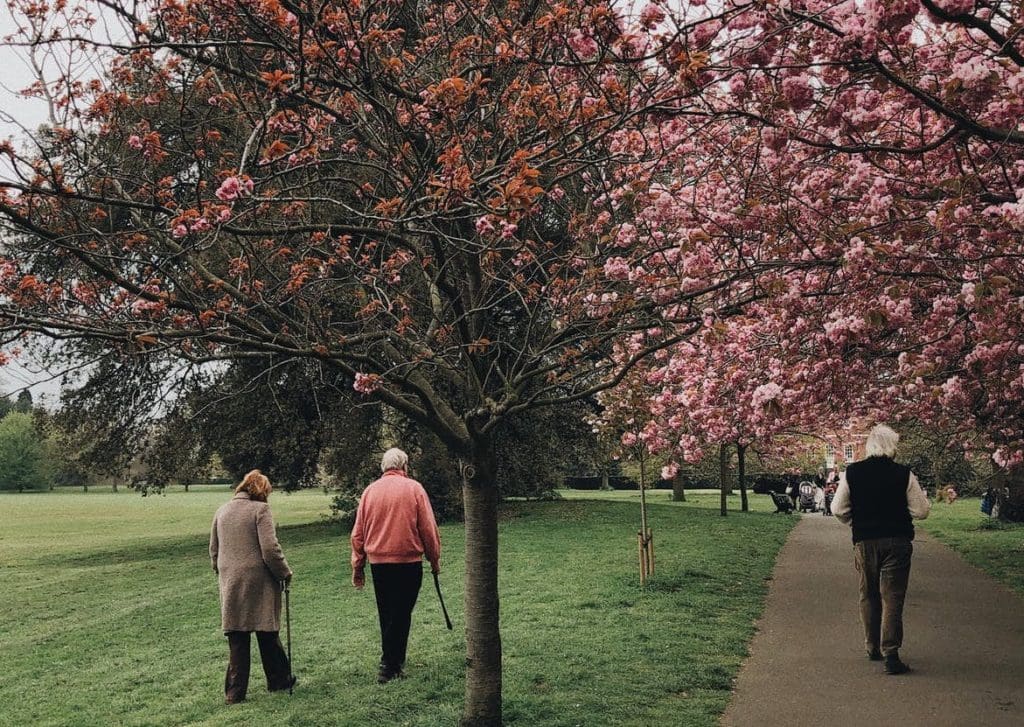
The COVID-19 pandemic left many people looking for a safe way to stay healthy. According to research from the Centers for Disease Control, looked for places to walk.
There isn’t always research to show what most of us suspect — but it is helpful when the data back up our suspicions. The most recent example is a new report that demonstrates how important walking was during COVID-19 and how willing people were to get out and try new places to walk while they were practicing social distancing.
The report, entitled “Observation of and intention to use new places and changed spaces for physical activity during the COVID-19 pandemic — United States, June 2021,” was conducted by researchers from the Centers for Disease Control. The methodology was as follows:
“Respondents were asked if they had discovered new places to be physically active during the past year, and if changes had been made to streets or outdoor areas to allow additional space for recreating. Those responding “yes” were asked if they intended to use the respective space.”
The responses were interesting, both in what they demonstrate and the potential for future extrapolation. According to the report, about a quarter of people “reported discovering new places to be physically active, and 25.3% reported observing changes to streets and outdoor spaces for recreation.”
Walking and COVID – A Natural Fit
During the pandemic, most physical activities were either limited or completely unavailable. Yoga studies, gyms, and other spaces were closed. Folks with the space could work out at home; the sale of exercise equipment soared. But for many people, indoor home space is limited, making it difficult to exercise. Coupled with the cooped-up feeling that came from social distancing and isolation, exploring the outdoors became more appealing than ever.
Parks, beaches, and trails — places people know they can go to safety get outside — were a draw, but many people also wanted to try going somewhere new. We saw this in Google searches during the pandemic, when users were more likely to use terms like “walking trails near me” or “places to walk.” Depending on where you lived, you may or may not have come up with options.
Many cities and towns rose to the challenge, shutting down streets for vehicular traffic, encouraging folks to move comfortably in areas that previously weren’t safe for walking and rolling. But this report also demonstrates that communities could have done more — most people did not see improvements in their areas, which means that many more people could have taken advantage of these kinds of interventions if they were visible and accessible.
Accessibility Issues Keep People From Walking
Inaccessibility proved to be a big hurdle for many people, even with these interventions in some areas. Some demographics were more likely to report that they did discover new areas; walkers, younger people, and those from higher income households were more likely to have reported that they discovered new places for outdoor recreation.
This speaks to the barriers for outdoor physical activity, both physical and on a community level. Lower-income individuals, older folks, and those who use mobility assistance devices need more than just a street without cars; they may need connectors between neighborhoods, safe and accessible crossings over busy streets, and improved lights, indicators, and demarcations.
Looking at the intentions of the people interviewed, it’s clear that it’s worth it for cities to invest in these changes and ensure that accessibility is a high priority.
“While discovery of new places varied by income and education level, intention to use was uniformly high across all subgroups,” reads the report. “These findings suggest that expanding access to places for physical activity in previously underserved areas…may help reduce established disparities in physical activity participation by race/ethnicity (Watson et al., 2021b), income (Watson et al., 2021b), and education (Whitfield et al., 2021).”
Ideally, walking and rolling should be some of the most easily accessible forms of activity. Time and again, folks have demonstrated an interest in exploring their communities and investing in their health with robust outdoor activities. During the pandemic, especially, the mental health benefits of regular exercise became critical to many people.
Too often, though, people who want to go out and walk or roll are discouraged from this kind of physical activity because of real, infrastructural challenges — challenges which can and must be addressed by local government bodies.